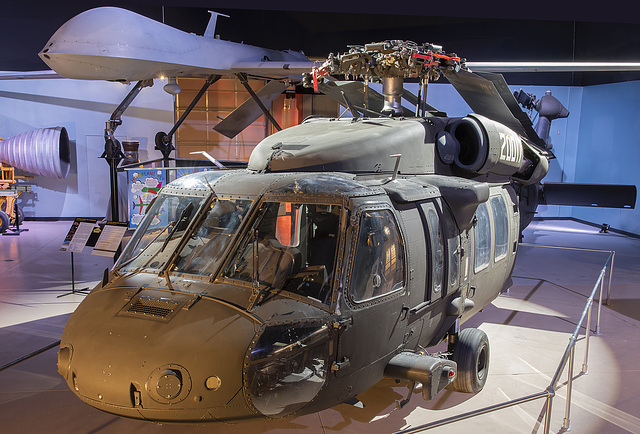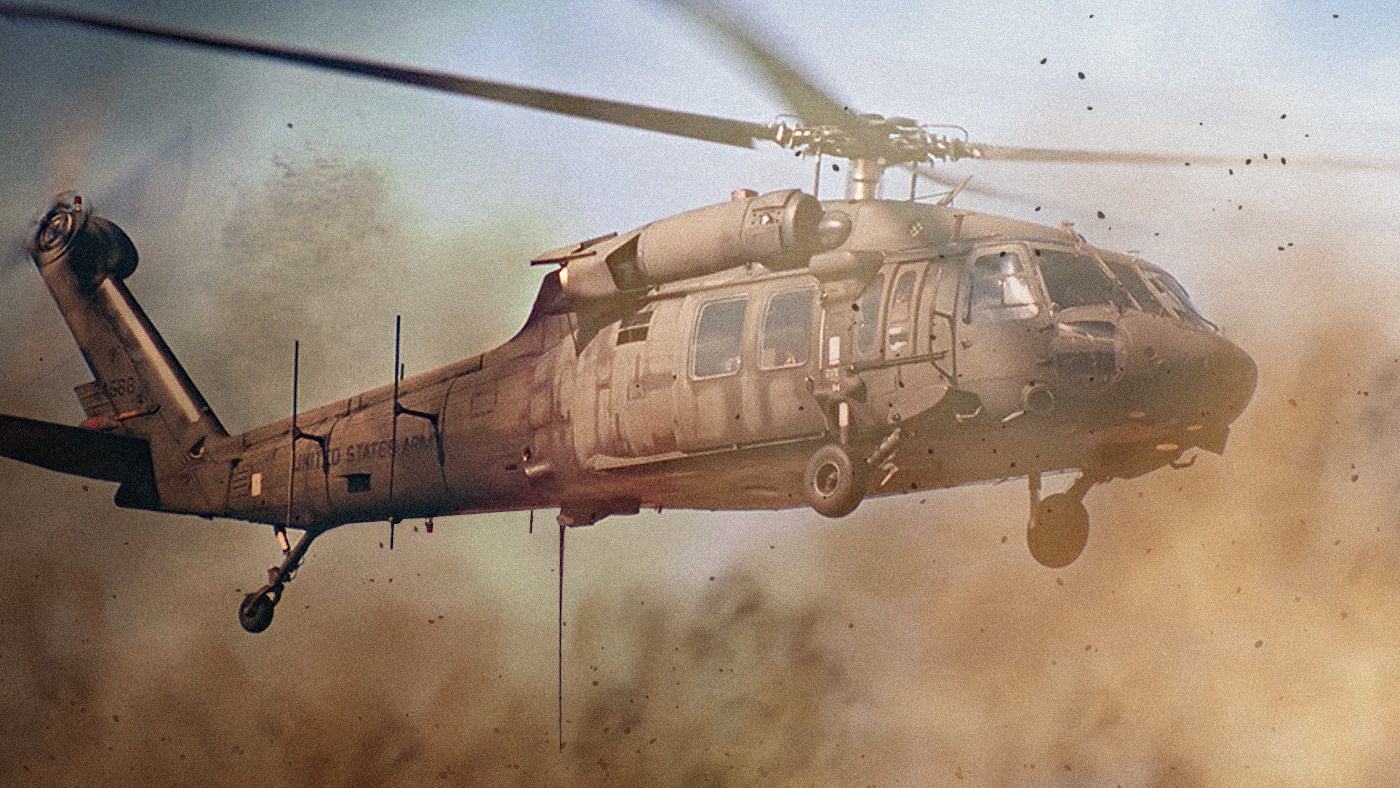Defending Boundaries: UH-60 Blackhawk Duty in National Security
Defending Boundaries: UH-60 Blackhawk Duty in National Security
Blog Article
Discovering the Background and Advancement of Uh 60 Helicopters
The development of UH-60 helicopters stands as a testament to the unrelenting quest of development in air travel innovation. From their simple starts to turning into one of one of the most functional and widely used aircraft in military procedures, the journey of these helicopters is an interesting one. As we explore the background of UH-60 helicopters, we uncover not simply a timeline of innovations but likewise the pivotal duty they have actually played in shaping modern warfare. Join us as we reveal the interesting story behind the UH-60 helicopters and explore the influence they remain to have on armed forces strategies and procedures worldwide.
Very Early Origins and Growth
The very early origins and development of the Uh-60 helicopters can be mapped back to the requirement for a versatile and dependable airplane for various army procedures. In the late 1960s, the USA Military acknowledged the restrictions of existing helicopters and started the Energy Tactical Transportation Aircraft System (UTTAS) program to create a brand-new generation of energy helicopters. This program aimed to resolve the shortcomings of older helicopter designs by integrating sophisticated technologies and boosted performance capacities.

Introduction of the UH-60 Black Hawk
With the UH-60 Black Hawk's access into solution, a new era in armed forces air travel dawned, noting a substantial advancement in capabilities and versatility for the USA Army. Presented in 1979, the UH-60 Black Hawk was created as a multi-mission helicopter to change the aging fleet of UH-1 Iroquois helicopters. The Black Hawk's advanced attributes, including twin engines for boosted power and survivability, a four-blade major rotor system for enhanced lift performance, and a roomy cabin capable of accommodating up to 11 completely furnished troops, revolutionized the Army's air attack and energy capacities.
The UH-60 Black Hawk promptly showed its worth in a variety of missions, from army transport and medical evacuation to special procedures and search and rescue. Its convenience and dependability were more shown throughout Operation Urgent Fierceness in Grenada in 1983 and the invasion of Panama in 1989. The Black Hawk's success brought about its prevalent adoption not just by the united state Military yet also by numerous various other army forces and government firms worldwide.

Technical Developments Throughout The Years
Throughout the advancement of the UH-60 Black Hawk helicopters, substantial technical improvements have consistently improved their efficiency and capacities. One of the essential innovations is the combination of sophisticated avionics systems, consisting of electronic cockpits with multifunction screens, trip administration systems, and progressed communication systems. These improvements have not only increased the situational understanding of the team however have also structured the total operation of the aircraft.

Additionally, the fostering of much more powerful engines has considerably enhanced the UH-60 Black Hawk's ability to move, rate, and lift capacity. The most up to date models are furnished with a lot more reliable turboshaft engines that provide higher power outcome while maintaining gas effectiveness.
Duty of UH-60 in Armed Force Procedures
Having gone through substantial technological improvements for many years, the UH-60 Black Hawk helicopters play an important role in different army operations because of their versatility and integrity. These helicopters are widely utilized for objectives such as army transport, medical discharge, air attack, and unique procedures. The UH-60 is particularly valued for its capability to run in varied atmospheres, varying from intricate urban setups to sturdy surfaces, offering military pressures with a very adaptable airborne system.
One of the vital staminas of the UH-60 is its capacity for rapid deployment and removal of soldiers in fight areas, improving functional effectiveness and adaptability for military click for source leaders. Furthermore, its durable construction and progressed avionics systems contribute to its efficiency in tough problems, ensuring mission success also in aggressive atmospheres. The UH-60's duty in supporting ground forces, conducting reconnaissance objectives, and offering logistical assistance more highlights its importance in modern-day military procedures. In general, the UH-60 Black Hawk helicopters remain to be crucial properties for militaries worldwide, enabling them to attain their goals with precision and performance.
Modern Applications and Future Leads
In the contemporary landscape of military operations, the UH-60 Black Hawk helicopters continue to demonstrate their adaptability and tactical relevance with sophisticated technologies and evolving mission capabilities. One of the essential contemporary applications of the UH-60 is its critical role in clinical emptying goals, where its flexibility and speed are instrumental in promptly carrying hurt personnel from the battleground to medical centers. Furthermore, the UH-60's sophisticated avionics systems and improved maneuverability make it a valuable property in unique operations, including insertion and extraction of unique pressures in aggressive settings.
Looking in the direction of the future, the UH-60 system is poised to go through more advancements to improve its abilities. As army demands advance, the UH-60 Black Hawk helicopters are expected to introduce and adapt to satisfy the difficulties of tomorrow's functional settings.
Conclusion
In conclusion, the history and development of UH-60 helicopters have actually been noted by considerable innovations in innovation and their critical duty in military procedures. From their early beginnings to their contemporary applications, these helicopters have actually continually adjusted to fulfill the transforming needs of the military - uh-60 blackhawk. With continuous developments in innovation, the future leads for UH-60 helicopters continue to be read here encouraging as they proceed to play a crucial function in different military goals
Sikorsky Aircraft sites Company, a popular helicopter supplier, reacted to the UTTAS program's requirements by designing the UH-60 Black Hawk helicopter. Presented in 1979, the UH-60 Black Hawk was developed as a multi-mission helicopter to change the aging fleet of UH-1 Iroquois helicopters.Having undergone substantial technical improvements over the years, the UH-60 Black Hawk helicopters play an important function in numerous army procedures due to their adaptability and dependability.In the modern landscape of armed forces procedures, the UH-60 Black Hawk helicopters proceed to show their flexibility and critical importance through innovative modern technologies and progressing goal capacities. As military requirements evolve, the UH-60 Black Hawk helicopters are expected to adjust and introduce to meet the challenges of tomorrow's functional atmospheres.
Report this page